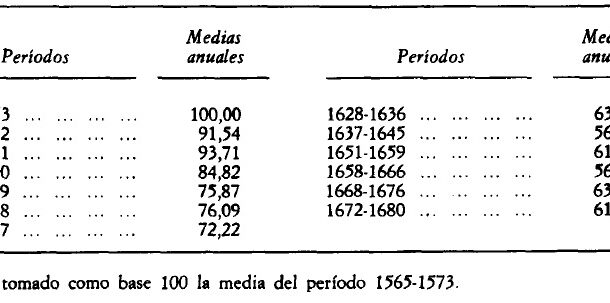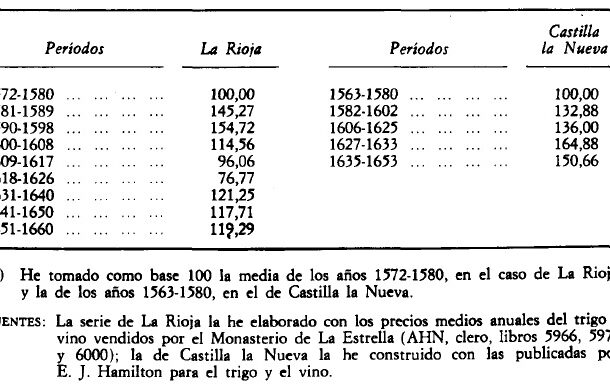
Different considerations have been made about the evolution of the Spanish economy during the 17th century, in which the existence of a generalised and prolonged crisis in the Spain of the misnamed minor Habsburgs was acknowledged. However, during that period the number of active people did not fall, agricultural production had precisely to register a downward trend, where there was a “hidden unemployment” and the decrease in the cultivated area allowed the average quality of the cultivated land to improve and the breeding of livestock to expand. The figures in the table show the stability of the terms of trade of the two main grains in the Leonese market during the 17th century and the first half of the 18th century. As far as Castile is concerned, taking the 1560s as a basis for comparison, the data do not show the depreciation of wheat in terms of barley during the first half of the sixteenth century. Consequently, the behaviour of relative prices does not seem to constitute a stimulus for the substitution of wheat for barley in the course of the contractionary movement.
Collection: Statistics
Project: 2. Social and economic impact of technological revolutions in Europe., 3. Rural world and urban world in the formation of the European identity.
Chronology: XVII
Scope: Secondary Education, Baccalaureate, University
Resource type: Statistics
Format: Table
Source: Llopis Agelan, Enrique, «El agro castellano en el siglo XVII: ¿depresión o “reajustes y readaptaciones”?», Revista de Historia Económica, Journal of Iberian and Latin American Economic History, 4, 1 (1986), pp. 11–37
Language: Spanish
Date: 1986
Owner: Álvaro Romero González (Modernalia)
Copyright: © Enrique Llopis Agelan, © Revista de Historia Económica
Abstract: Comparative price of wheat and price of barley in Golden Age Spain
Image
Tags








